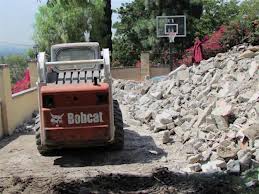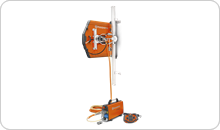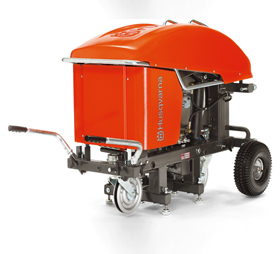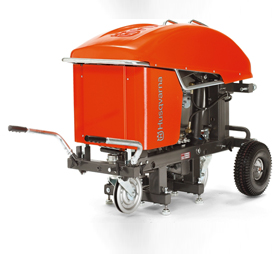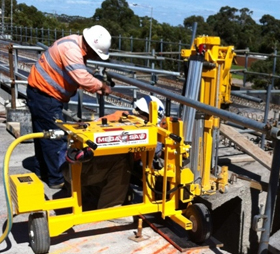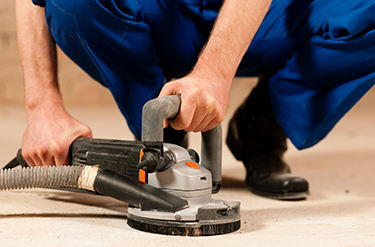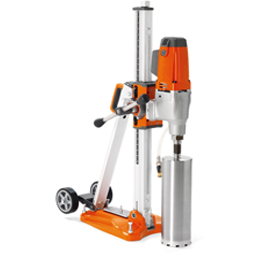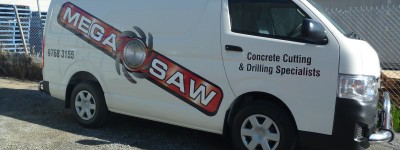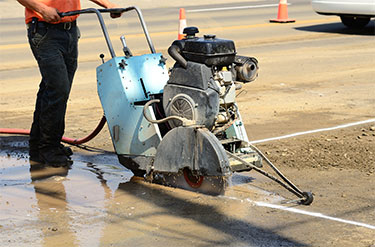Concrete removal jobs involve different types of hazards. There must be issued a clear and comprehensive warning for possible hazards contractors might face during their job. Here’s a brief list of possible hazards against which the participating contractors are warned.
Trip or Fall Hazards: Contractors are warned to be careful about protruding nails and other sharp objects. Surfaces they are working on must besturdy and not slippery. They also need to wear hard-soled work boots designed to protect their feet against crushing as well as other possible hazards. They must also maintain proper safety by maintaining stable 3-point contact with the ground and also must not stand on the topmost rung.
Chemical Handling Hazards: Contractors must not open or use chemicals with which they are not familiar. Before handling any chemical they must go through the safety data sheets provided by the manufacturers. Even those who are familiar with using chemicals are asked not to mix chemicals for precautionary reasons. Wearing eye protection at the time of handling them is a must.
Noise: Contractors also need to use earplugs to protect their hearing while working around loud equipment like heavy generators or chainsaws.
Head Injury Hazards: While working under low ceilings, or areas with a risk of overhead debris fall, or possible electrical hazards, contractors must use hardhats compliant with ANSI/ISEA 107-2004 standards.
Respiratory Hazards: Due to excessive dust during concrete removal contractors are also asked to use P100/HEPA filtering face masks. They are advised to conduct a seal check every time they use a face mask respirator. This is because apart from dust, other harmful particles like silica, asbestos, laden sand, mold and paint dust may also be present there. Contractors with pre-existing respiratory problems require a medical checkup before taking part in a concrete removal job. In addition, several other precautions are taken to ensure absolute safety while working.
Mold and Biological Hazards: In water damaged buildings, furnishings and materials, there is a high risk of mold contamination. Contractors must use only NIOSH approved respirators while working in those areas. Any porous material that has been wet for more than 48 hours must be removed and discarded. There are also specific instructions about cleaning non-porous surfaces.
Skin Irritation Hazards: When handling fiber glass, concrete or disposables exposed to sewage water, contractors must wear full sleeve shirts to prevent any kind of skin infection and irritation.
Lifting Hazards: The job often includes lifting of heavy loads. Contractors must learn to use safe lifting techniques for preventing any kind of back injury. For safe lifting, contractors should squat and lift. They should avoid bending by their waist when lifting any heavy object. There are also a few additional instructions. They include keeping the load as close to your body as possible; bowing the back and raising the head first while lifting; keeping feet apart; and to avoid jerking or twisting while carrying a load. It is best to wear shoes with no-slip soles. Following these precautionary measures ensures complete safety while working under demanding conditions.
Electrical Safety: Contractors working in cleanup projects and concrete removal jobs must never run a portable generator in closed conditions. The carbon monoxide emitted from the generators is extremely harmful, even fatal in indoor conditions. Shut the generator before refueling. All electric chords must be thoroughly checked for any kind of defect or punches. Contractors are required to use ground-fault-circuit-interrupter or GFCI while working with electrical equipment on a wet surface. They must also maintain a safe distance from grounded power cables. Any electrical equipment coming in contact with water must be checked intensively by a licensed and qualified electrician before switching back on.
Work Zone Traffic: While working near moving vehicles, it is mandatory for the contractors to wear high-visibility clothing and head protection. They must also use proper devices for traffic control to avert any possible accident.
Chain Saw Safety: There is a great potential for injury with this equipment. If not properly trained to handle chain saw or other similar equipment, contractors must abstain from using them. Even those trained to use them must also wear protective gear like hard hats, face shields, clamps and work gloves for maximum safety.
Contractors should be familiar with all the above mentioned hazards and the necessary protective measures before they indulge in concrete removal or other similar activities.


